The fusion of dark, gothic-inspired aesthetics with modern interior design has created a bold new trend, and at the heart of this trend is the Skull Design Dining Table. This unique furniture piece combines art and functionality, making it an inspiring choice for those looking to make a dramatic statement in their home. The idea of incorporating a skull motif into a dining table may seem unconventional, but it symbolizes a deeper blend of history, artistic freedom, and the desire to break traditional design boundaries.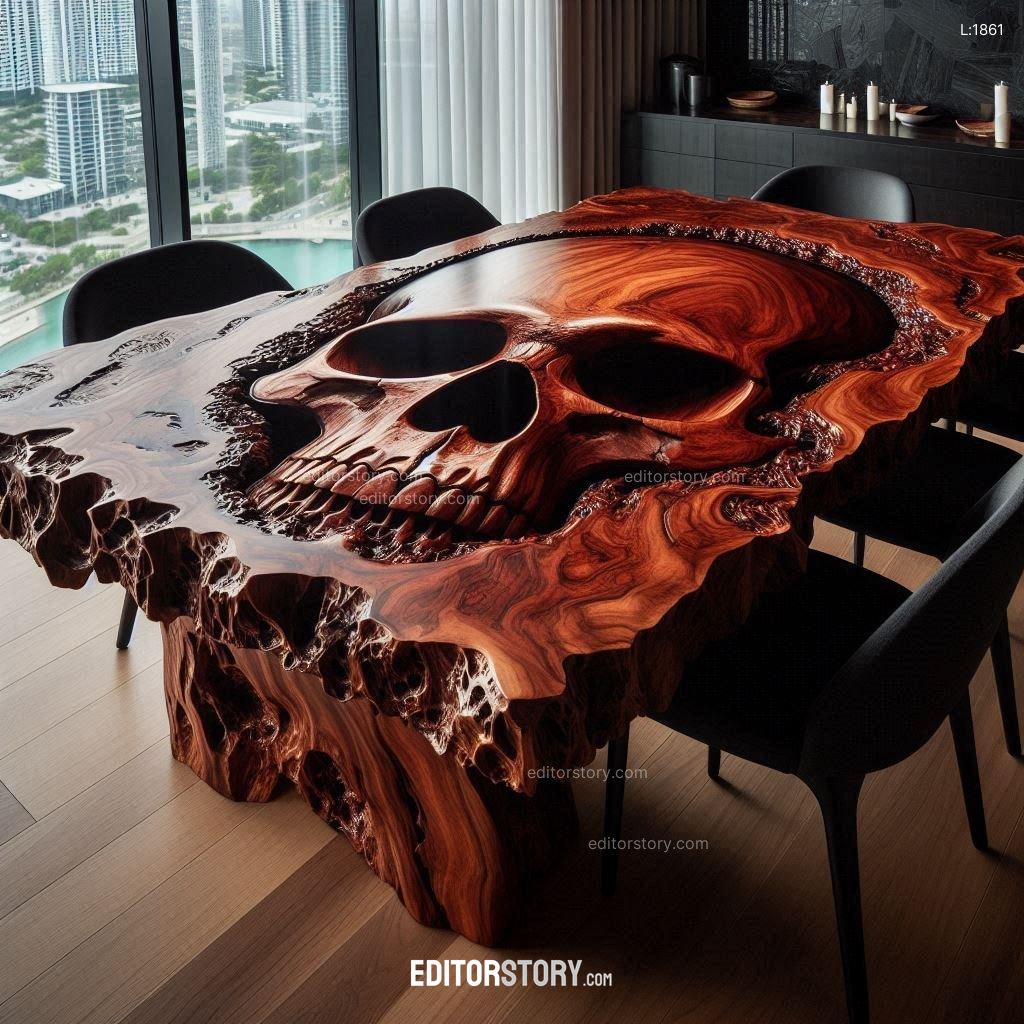
In this article, we will dive deep into the Skull Design Dining Table concept, explore the inspiration behind it, look at various color options and material choices, discuss the practical benefits, and consider where this table can best be used. Whether you’re an interior design enthusiast, an artist seeking inspiration, or someone looking for a striking centerpiece for your dining room, this article will guide you through every facet of this extraordinary design concept.
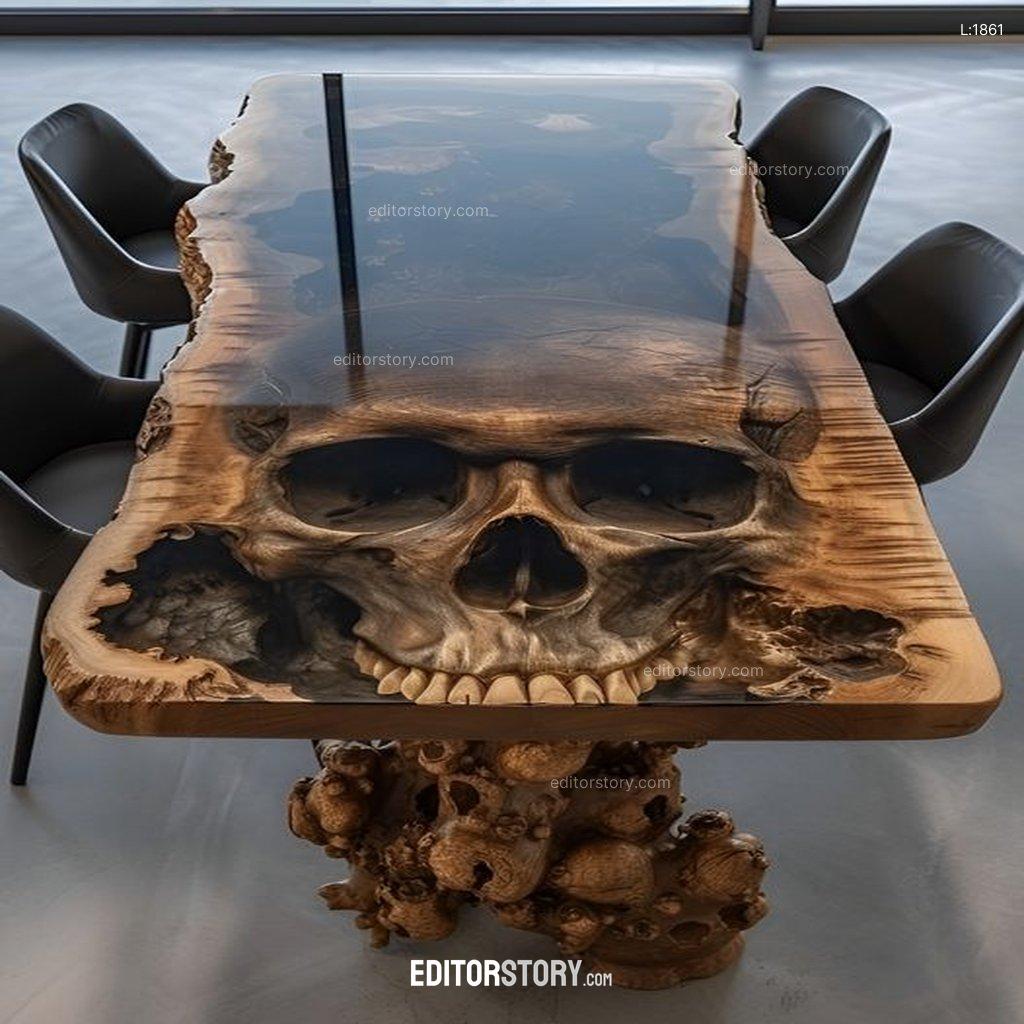
Contents
- Introduction: A Bold Statement in Modern Gothic Design
- Creative Design Inspiration: Where Art Meets Function
- Color Choices and Materials: Elevating the Skull Design
- Benefits of a Skull Design Dining Table: Art, Functionality, and More
- Where to Use a Skull Design Dining Table
- Conclusion: Embracing the Bold with a Skull Design Dining Table
Introduction: A Bold Statement in Modern Gothic Design
In recent years, there has been a surge in gothic-inspired furniture with a modern twist. Among the most striking elements in this trend is the Skull Design Dining Table, a piece that combines the eerie allure of gothic symbolism with contemporary craftsmanship. Skulls have long been symbols of mortality, mystery, and power, often used in various art forms to evoke a sense of intrigue. However, when integrated into modern furniture design, the skull transforms into a symbol of daring creativity and a touch of rebellious elegance.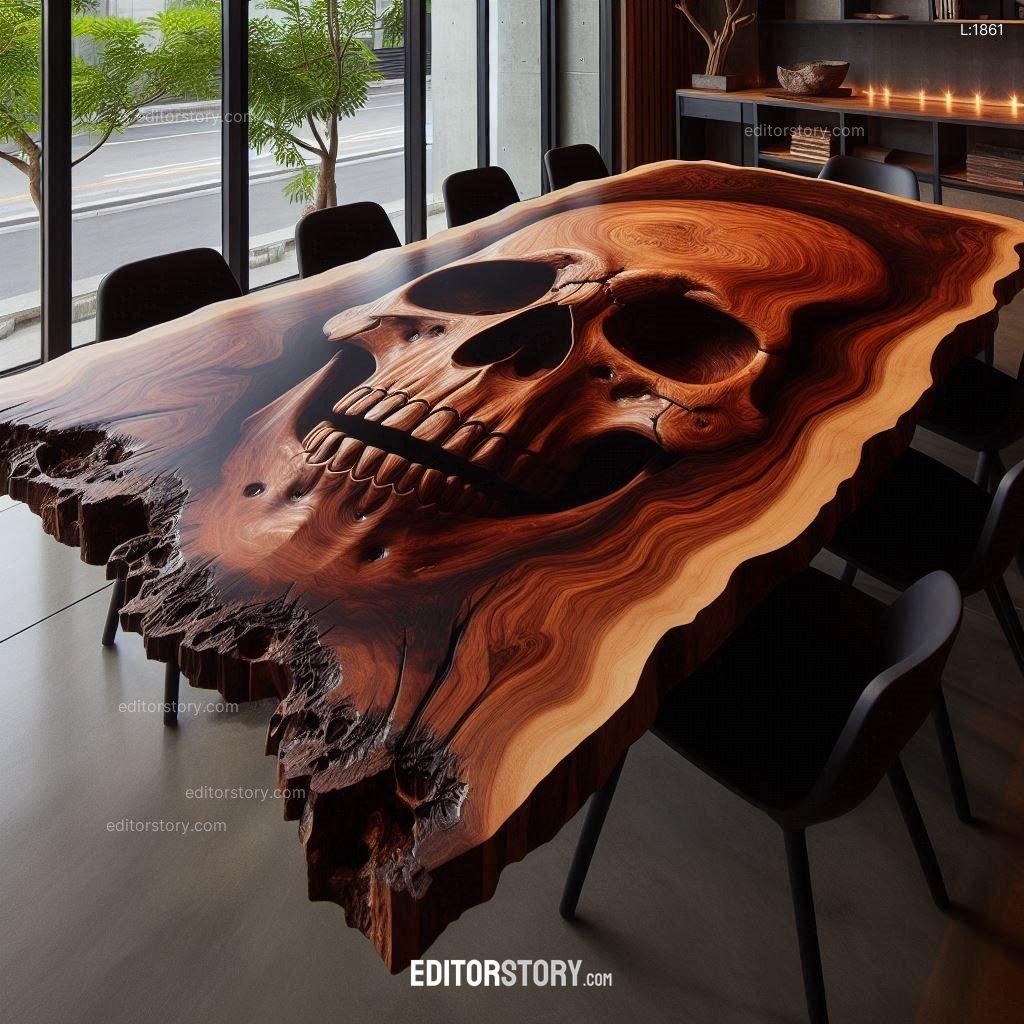
The Skull Design Dining Table offers more than just aesthetic appeal. It presents an opportunity to challenge the norms of interior design by blending old-world gothic elements with modern minimalism or even industrial styles. Imagine dining on a table that is not only functional but also a work of art—a conversation starter that captures attention the moment someone enters the room.
But what exactly goes into crafting a Skull Design Dining Table? And why has it become a favorite among interior designers and creative homeowners alike?
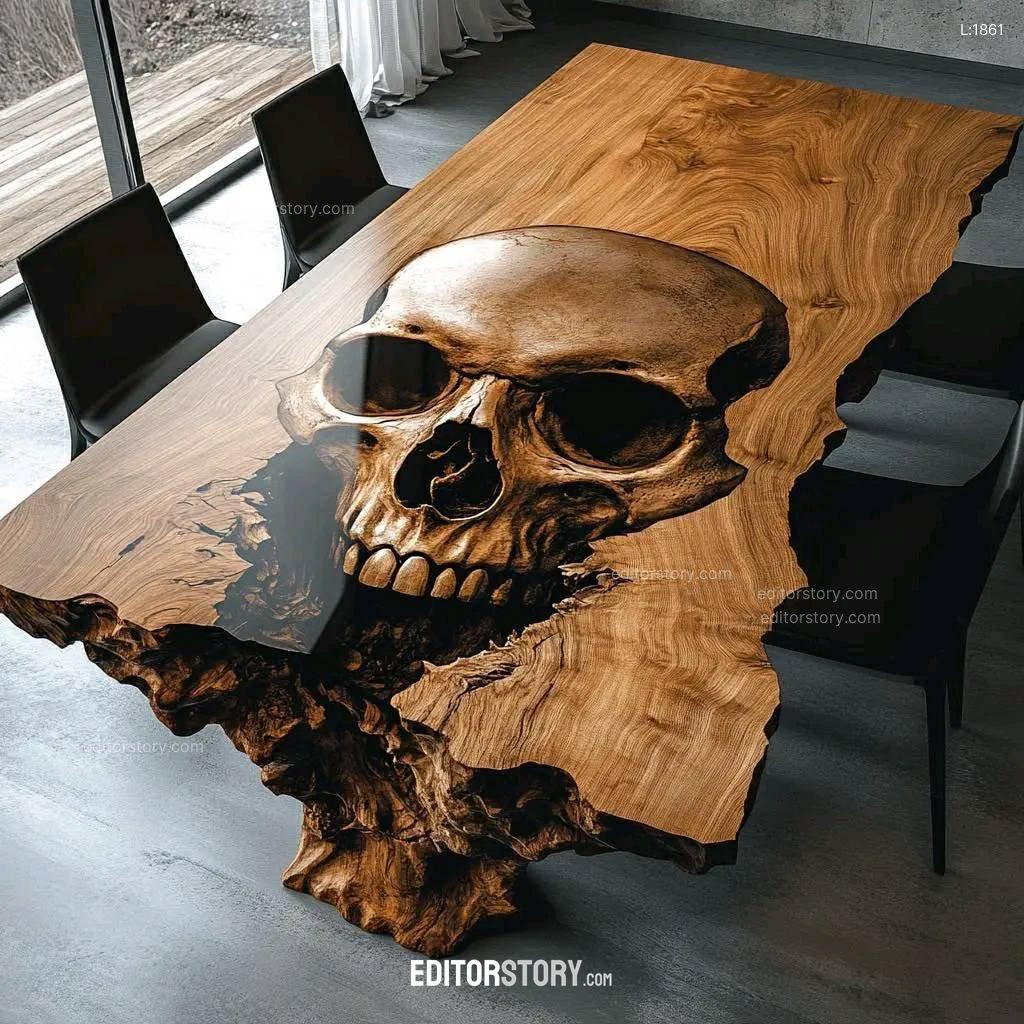
Creative Design Inspiration: Where Art Meets Function
At the heart of the Skull Design Dining Table lies a profound interplay between art and function. Inspired by gothic architecture, pop culture, and contemporary design trends, this table symbolizes a rejection of the mundane. It seeks to turn an everyday object—a dining table—into an extraordinary centerpiece.
The Skull Motif: A Symbol of Power and Elegance
The skull, often seen in ancient art, rock ‘n’ roll culture, and even fashion, has always carried strong symbolic weight. In the context of furniture design, it represents the fusion of life and death, strength and beauty. The Skull Design Dining Table takes these symbols and gives them a modern twist, presenting the skull in sleek, artistic forms that meld seamlessly with today’s design aesthetics. By integrating skulls into the very structure of the table, designers offer a bold statement on mortality, while also delivering an object of enduring beauty and function.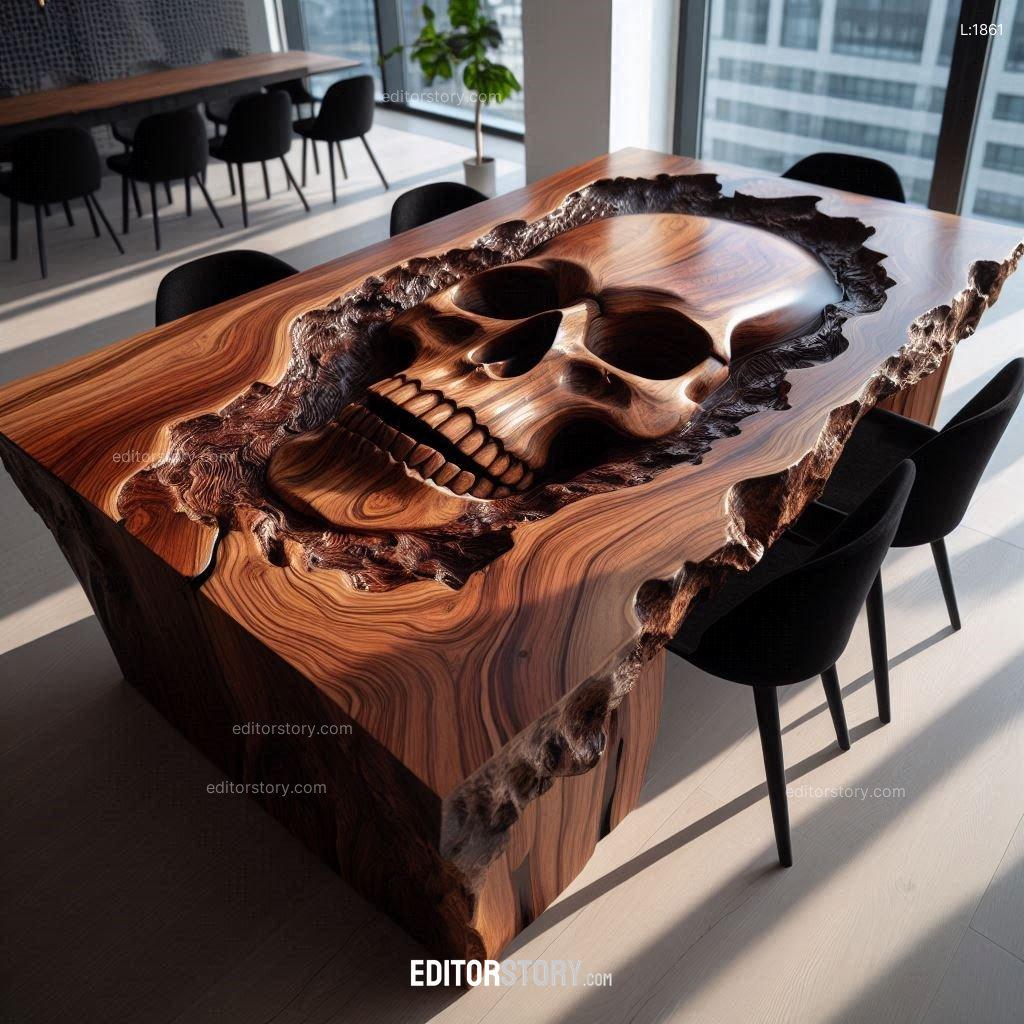
Gothic Architecture: An Enduring Influence
The gothic movement of the 12th century introduced architectural elements such as pointed arches, intricate details, and an emphasis on verticality. These characteristics can easily be seen in Skull Design Dining Tables. Some designs may feature table legs or frames that resemble gothic pillars, giving the table a towering, cathedral-like presence in the dining room. The intricate carvings of skulls and bones that form the base or the edges of the table are reminiscent of gothic sculpture, lending the piece an almost otherworldly aura.
Modern Meets Gothic: A Perfect Blend
While the Skull Design Dining Table draws heavily from gothic inspirations, it also incorporates modern design principles. Clean lines, minimalist shapes, and the use of contemporary materials such as metal, glass, and polished wood bring this table into the 21st century. The result is a dining table that is both timeless and edgy, making it a suitable addition to modern lofts, industrial-style spaces, or even minimalist homes that crave a touch of eccentricity.
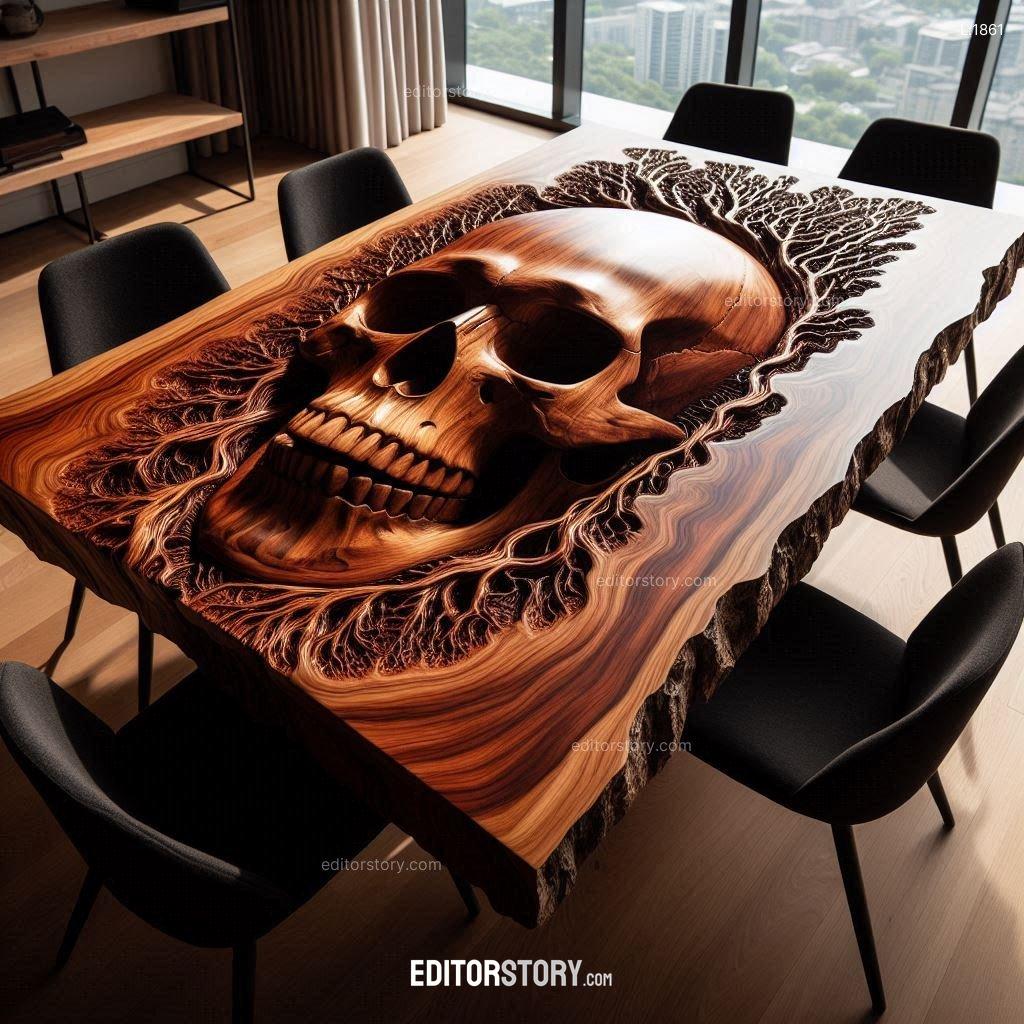
Color Choices and Materials: Elevating the Skull Design
When it comes to creating a Skull Design Dining Table, the choice of colors and materials plays a crucial role in shaping the overall aesthetic. Whether you’re going for a dramatic gothic atmosphere or something more subtle, selecting the right combination can dramatically enhance the table’s impact.
Monochrome Magic: Black, White, and Shades of Gray
One of the most popular approaches to the Skull Design Dining Table is the use of monochromatic color schemes. Black tables, often paired with sleek chrome or matte finishes, exude a strong gothic vibe while maintaining modern elegance. Black, being a color long associated with mystery and sophistication, can elevate the dining experience into something more theatrical. On the other hand, a white skull design table brings a sense of ethereal beauty, offering a stark contrast between the morbid symbol of the skull and the purity of its color. For a more balanced approach, various shades of gray can be used to bridge the gap between dark and light, creating a table that is both striking and versatile.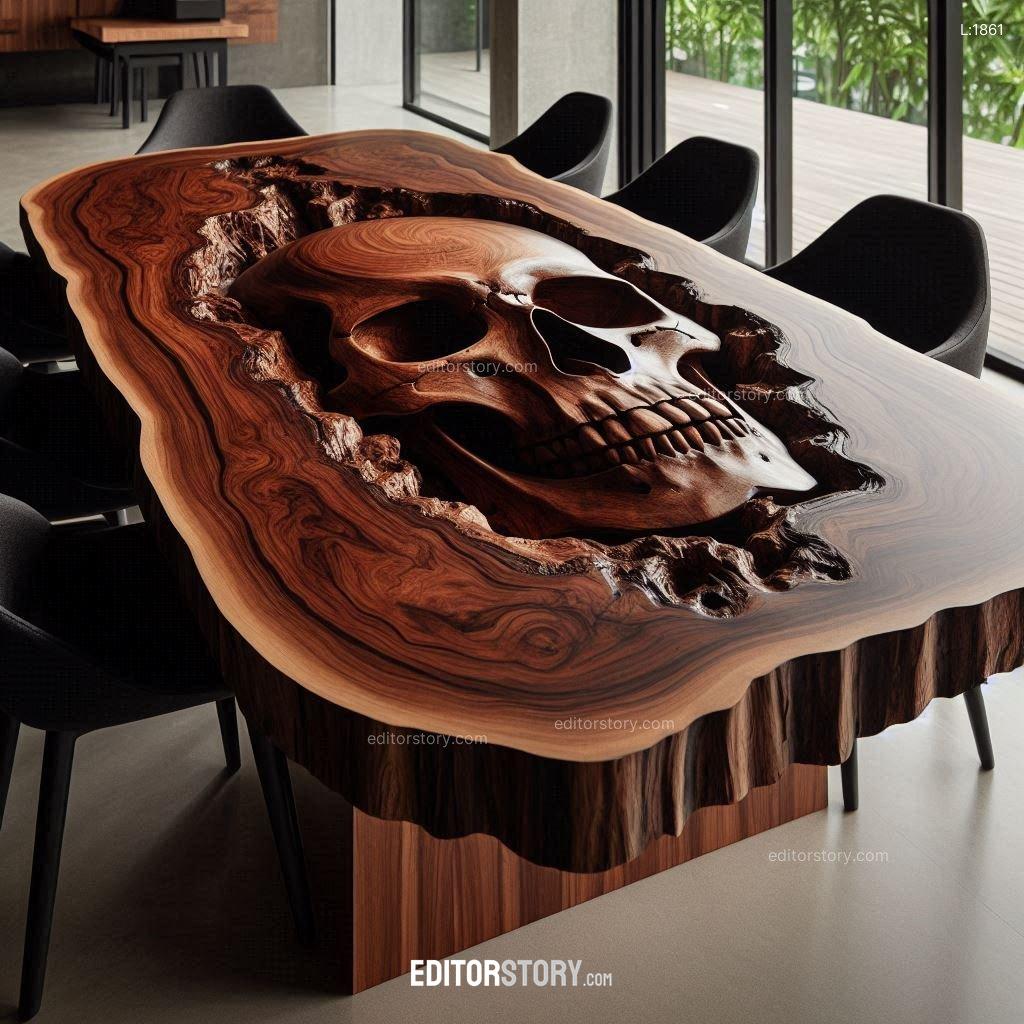
Metallic Finishes: A Bold Twist
For those looking to push the boundaries further, metallic finishes like brass, copper, or even gold can be introduced into the table’s design. Imagine a polished brass skull anchoring the center of the table, catching the light and giving the entire room a sense of opulence. Metallic accents also lend themselves to a more industrial look, perfect for urban loft spaces or eclectic homes.
Wood and Glass: A Natural Contrast
The combination of organic materials like wood with modern elements like glass adds a layer of contrast that enriches the design. A wooden Skull Design Dining Table could feature intricately carved skulls along the edges, while the surface remains smooth and polished, giving the table a rustic yet artistic feel. Alternatively, incorporating glass tabletops can lend a sleek, modern finish, allowing the skull design to shine through without overpowering the room.
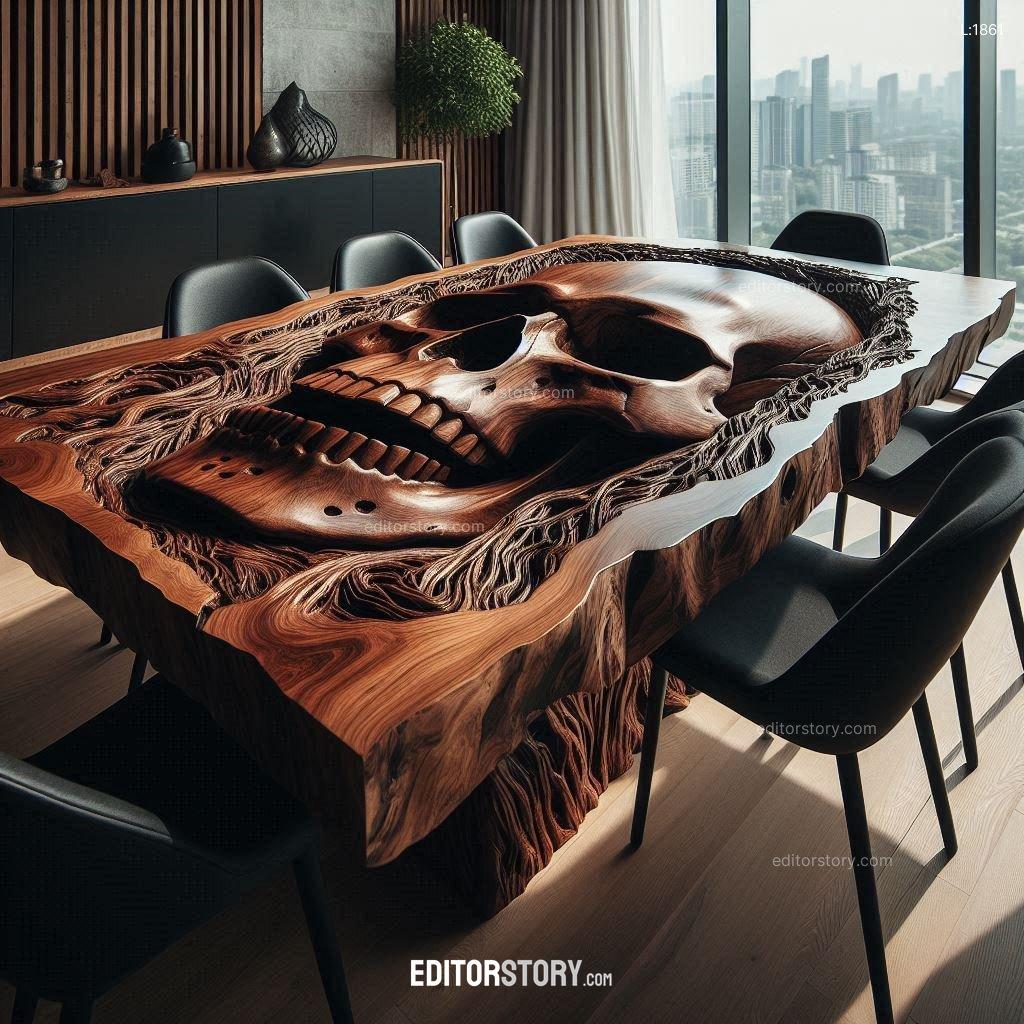
Benefits of a Skull Design Dining Table: Art, Functionality, and More
The appeal of the Skull Design Dining Table goes beyond aesthetics. This type of table offers several practical benefits that make it a worthwhile investment for those looking to add personality to their space.
A Conversation Starter
One of the greatest benefits of a Skull Design Dining Table is its ability to act as a conversation starter. It’s not every day that people see a dining table with such bold, artistic design choices. This type of table immediately draws attention, and whether guests find it mesmerizing or provocative, it will undoubtedly leave a lasting impression.
Versatility Across Design Styles
Despite its gothic roots, the Skull Design Dining Table is surprisingly versatile. It can be incorporated into various design styles, from modern minimalist spaces to bohemian or even eclectic interiors. The key lies in the way the table is styled and the materials used. For example, pairing a skull design table with sleek, modern chairs and simple decor allows the table to stand out as a piece of art. On the other hand, combining it with more rustic or vintage furnishings can create a mysterious, old-world atmosphere.
Functionality Meets Art
While the Skull Design Dining Table is undeniably a piece of art, it doesn’t compromise on functionality. Built with sturdy materials, this table is just as practical as it is visually striking. Whether it’s used for daily family meals or special gatherings, it is designed to withstand regular use while serving as a stunning focal point in the dining area.
A Reflection of Personal Style
Choosing a Skull Design Dining Table says something about the homeowner’s personal style. It reflects a willingness to embrace unconventional design, a flair for the dramatic, and an appreciation for the fusion of old and new aesthetics. For those who are looking to make a statement with their interior design choices, this table is the perfect embodiment of bold personal expression.
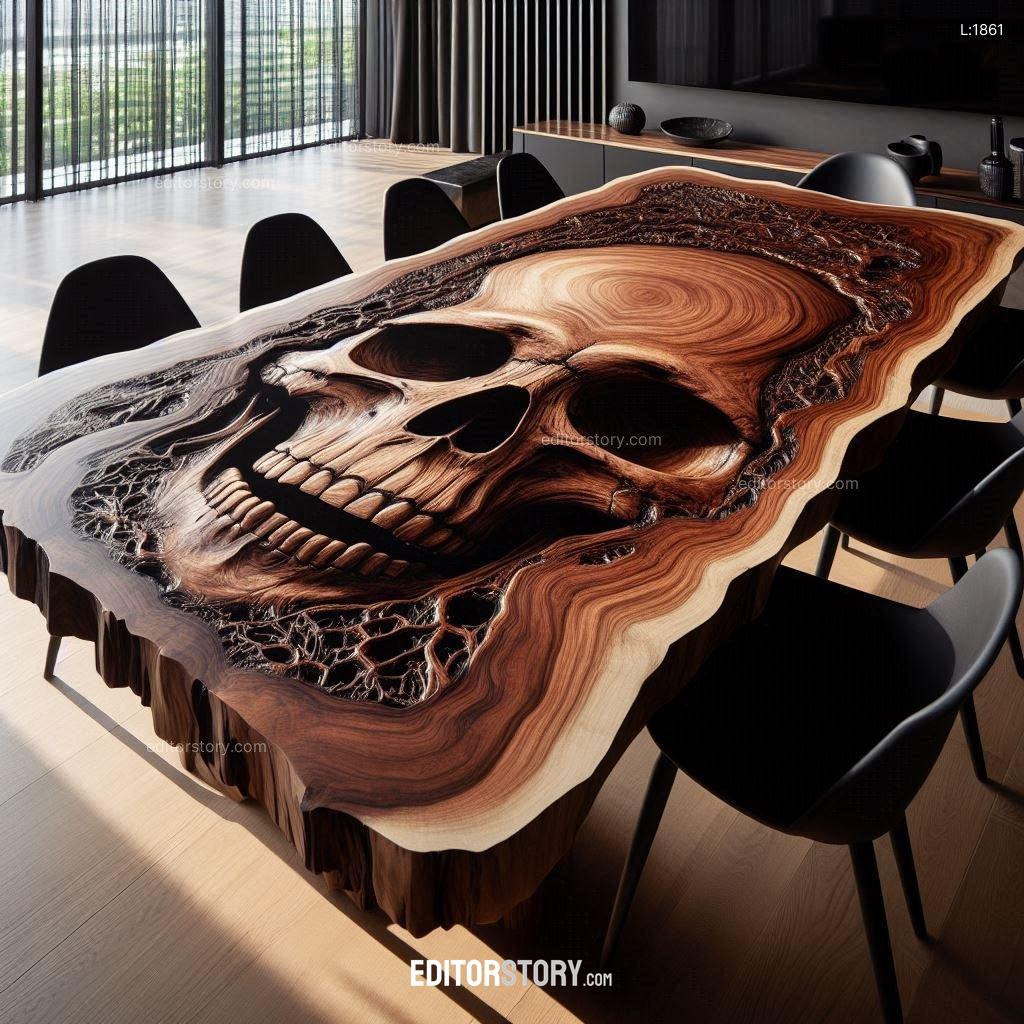
Where to Use a Skull Design Dining Table
The Skull Design Dining Table can be used in a variety of spaces, each offering a unique way to showcase its dramatic design.
The Dining Room: The Perfect Centerpiece
Naturally, the primary place for a Skull Design Dining Table is the dining room. In this space, it becomes the star of the show, commanding attention and setting the tone for the room’s overall aesthetic. Whether the dining room is formal or casual, the skull design adds a layer of intrigue and sophistication, turning every meal into an event.
Art Spaces and Galleries: Functional Artwork
The artistic nature of the Skull Design Dining Table makes it a great fit for art spaces, galleries, or creative studios. In these environments, the table can double as both a functional piece of furniture and a showcase for bold, contemporary design. It’s a perfect fit for those who appreciate art in all its forms, blending function with artistic expression.
Themed Restaurants or Bars: A Unique Ambiance
For businesses, particularly themed restaurants or gothic-inspired bars, the Skull Design Dining Table offers a distinctive way to create a memorable atmosphere. Patrons are likely to be drawn to the unique design, enhancing their dining experience and making the venue stand out in a crowded market.
Home Libraries or Study Areas: Gothic Elegance
In a home library or study area, a Skull Design Dining Table can be repurposed as a dramatic desk or meeting table. Its gothic elegance will enhance the atmosphere of contemplation and creativity, making it a perfect addition for those who appreciate a darker, more introspective design aesthetic.
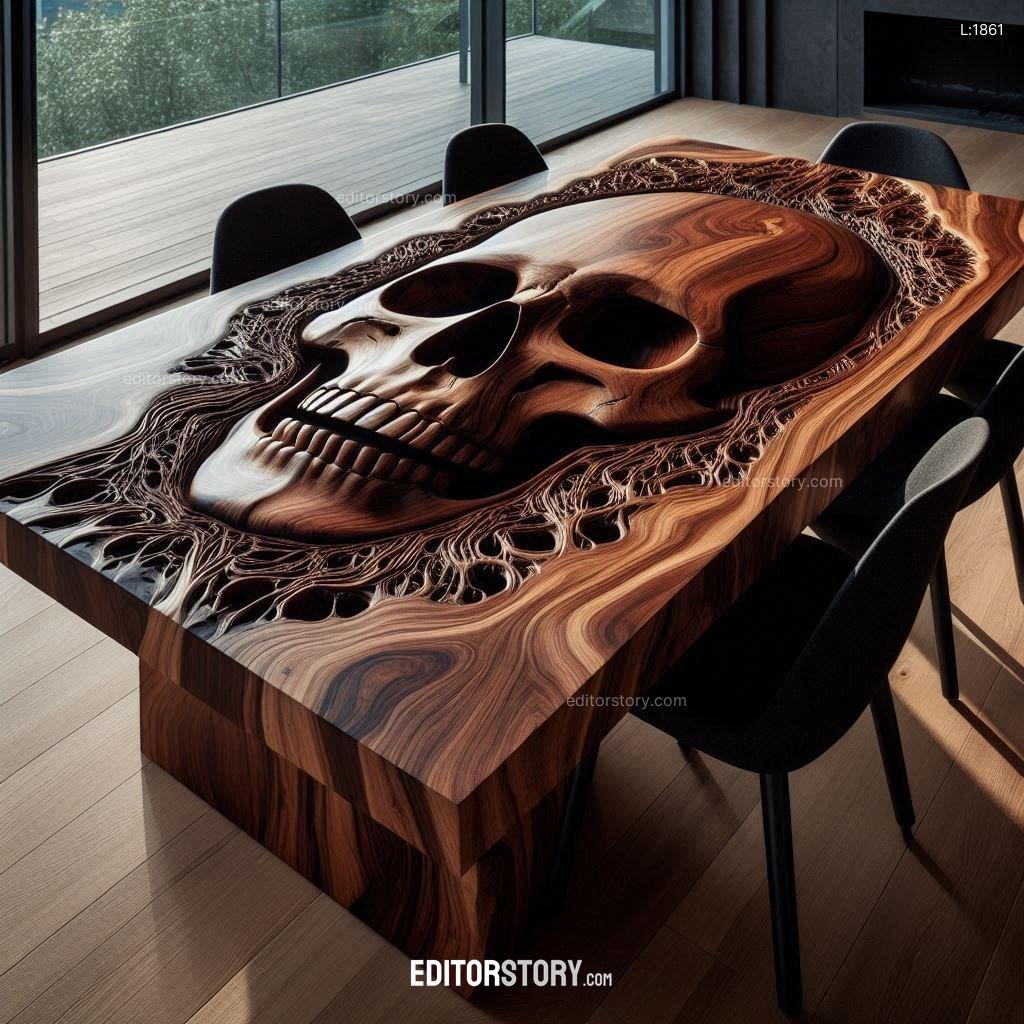
Conclusion: Embracing the Bold with a Skull Design Dining Table
The Skull Design Dining Table represents a daring departure from conventional dining furniture, offering a unique blend of gothic inspiration and modern design. It’s more than just a dining table; it’s a work of art that makes a powerful statement about the homeowner’s personal taste and design sensibilities. With its roots in gothic architecture,